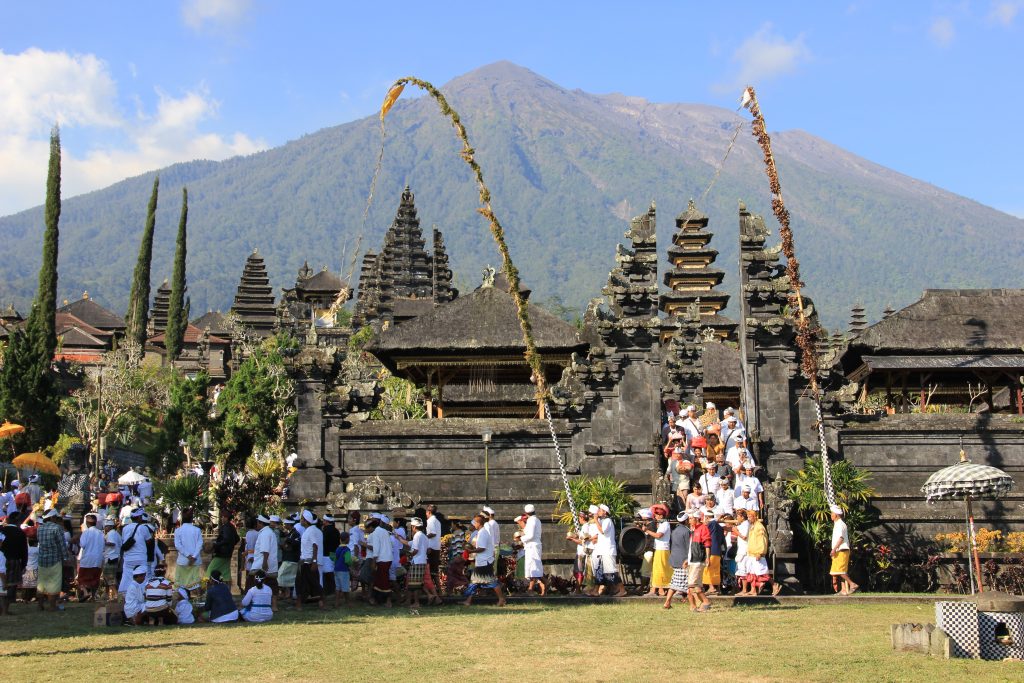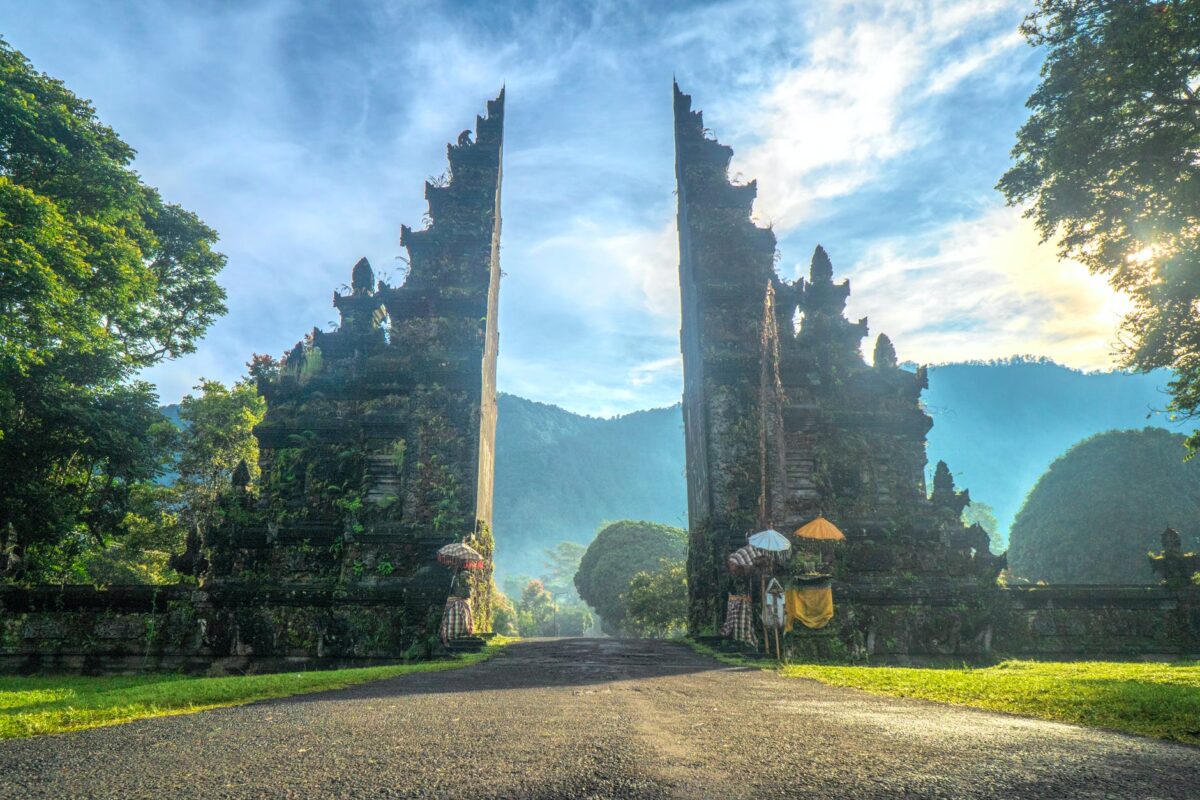Bali is the pearl in a string of Indonesian islands located east of Java and west of Lombok. Nature, religion, and the developed arts have all flourished on this island which is surrounded by one of the world’s largest and most diverse coral reefs. It also boasts a UNESCO World Heritage Site – the Subak irrigation system.


Unlike the rest of Indonesia, which is predominantly Muslim, the inhabitants follow what is known as Balinese Hinduism. It is said to have arrived around the first century, and is best described as a melding of animism, ancestral worship (Pitru Paksha) and reverence for bodhisattvas (Buddhist saints).
Its name comes from Sanskrit, meaning “island of sacrifice, reincarnation, and offering”.
Bali has been called, “The Island of the Gods” and its name comes from the Sanskrit, meaning “island of sacrifice, reincarnation, and offering”. Its inhabitants speak Bahasa Bali, Indonesian, and more often than not, English.
Tourism forms the main economic base and it is easy to see why; there is no shortage of natural beauty, ancient temples, artistic craftsmanship, and diverse outdoor activities.
Bali has a magical quality which is difficult to define and it is this melange of nature and spiritualism that has attracted people from virtually every corner of the world.
One of the most breathtaking locations in Bali is Pandawa Beach at the tip of Nusa Dua, the elegant small peninsula at the southernmost point of the island.
Balinese Dance
UNESCO has recorded nine traditional dances of Bali as expressions of cultural heritage. Dance is considered more than a performance art, it is also part of religious practice and students are instructed in both areas from a very young age. The three most well-known dances are: Legong, Barong, and Kecak.
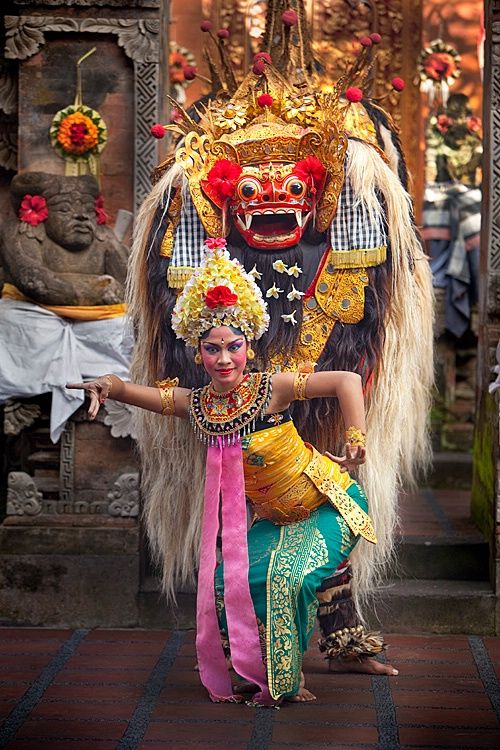
Legong requires a mastery of the body, fingers, feet, hands, and eyes as well as dramatic facial expressions. The speed of the dance is slow and measured and stresses dramatic effect. This dance was originally a royal entertainment and the status of these girls and young artists is greatly enhanced in society.
Barong illustrates the eternal fight of good over evil, personified by Queen Rangda. Two men occupy a large, lion-like animal mask costume on the stage, usually accompanied by two monkeys. The level of delicacy and nuance illustrated by the Barong character as it enters the world of humans is astounding.
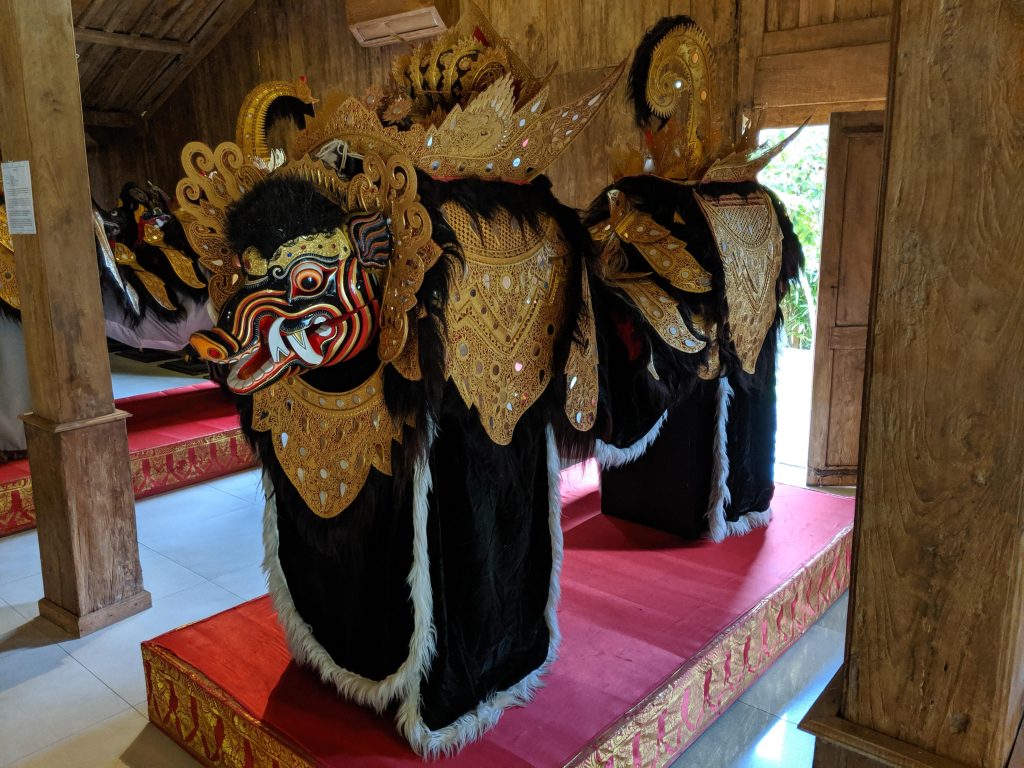
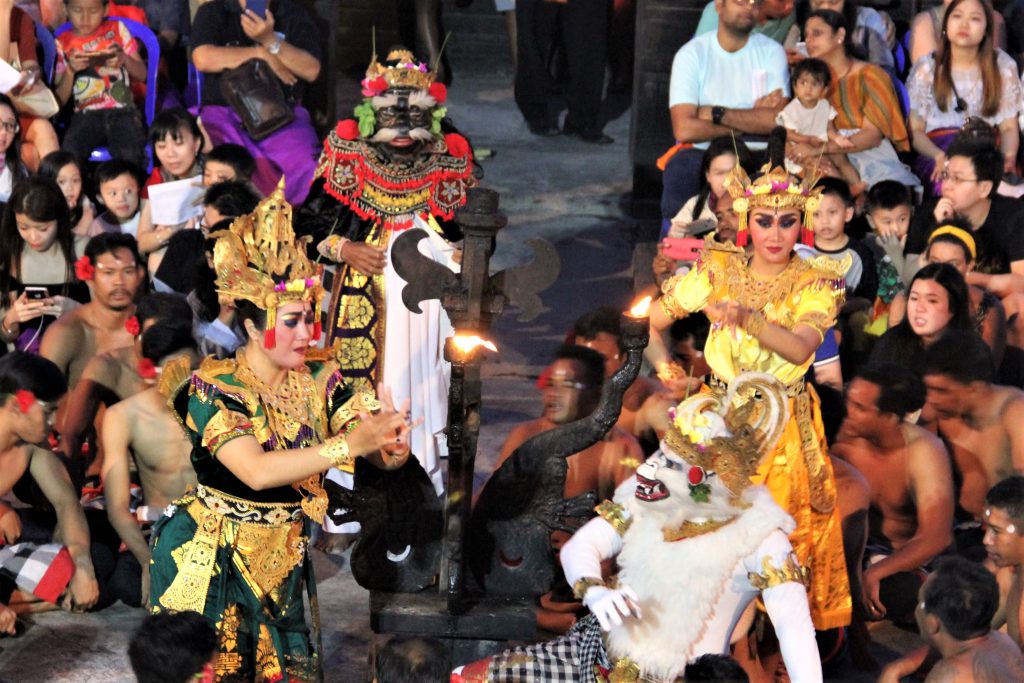
The third most well-known dance, most famously performed at Uluwatu Temple at sunset, is the Kecak dance, which was originally a trance ritual transformed in the 1930’s by Walter Spies, a German artist, into a drama based on the Hindu epic, the Ramayana.
Over one hundred shirtless men in sarongs move in synchronized rhythm with arms and hands and provide the background for the story which ends in the portrayal of the burning of Hanuman.
Tourists usually see adapted stage variations while the Balinese enjoy the complete version during pura, or ceremonies, in temples.
Balinese Music
The accompaniment of music to all three styles of dance is by gamelan, a traditional Balinese orchestra. Although this can be performed alone, it is most often used in stage performances and consists of wood, bronze, and bamboo instruments, along with giant drums.
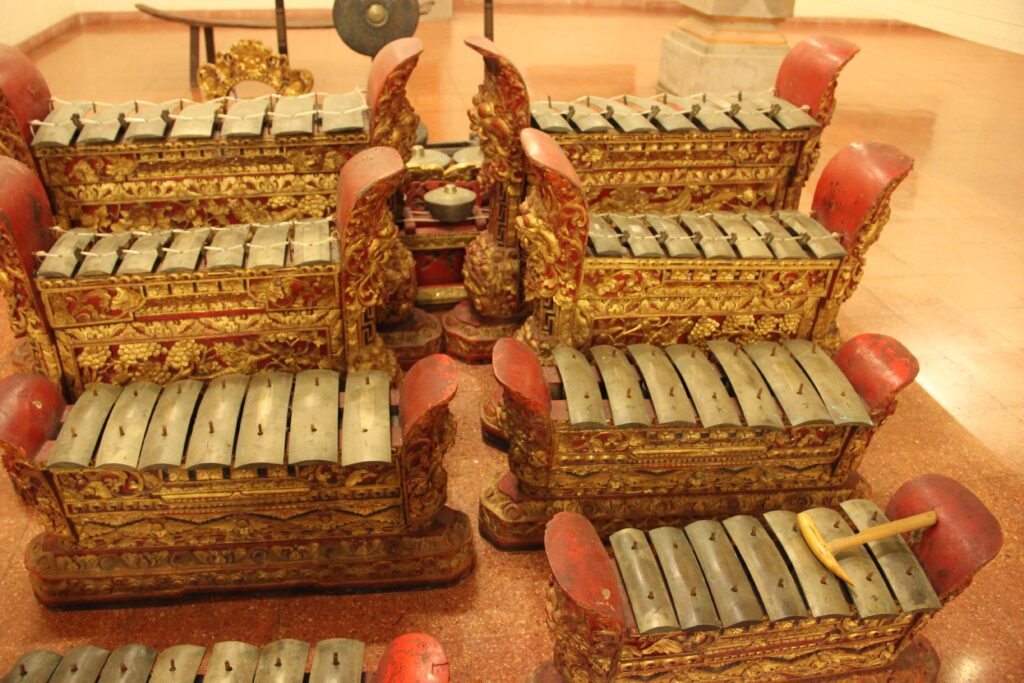
Costumes play a huge role in all Balinese dance performances. There are full and partial masks, colorful draped garments, and gold ornaments worn by men and women alike.
One of the most fascinating (and little known) points of interest near Ubud is the Setia Darma House of Mask and Puppets. It is a veritable treasure trove of Balinese, Javanese, and global masks, puppets, and full size costumes which have been beautifully collected and displayed in large wooden houses. There is also a theatre on site for programs.
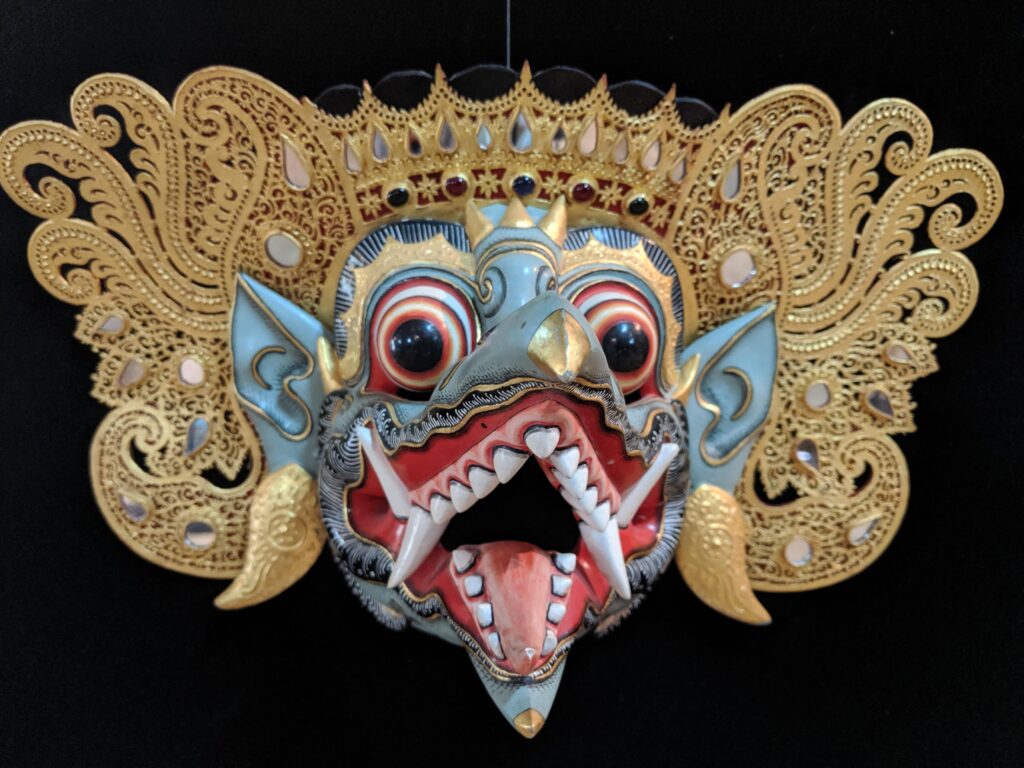
Balinese Food
Balinese food is centered around meat, mostly roast pork, chicken, goat, beef, fish, and egg and is accompanied by a variety of vegetables and fresh hot sauce relishes (sambal). Shallots, garlic, and chilis are common additions, along with lime leaves and lemongrass. Cabbage, bean sprouts, cassava leaves, and grated coconut provide plenty of variety.
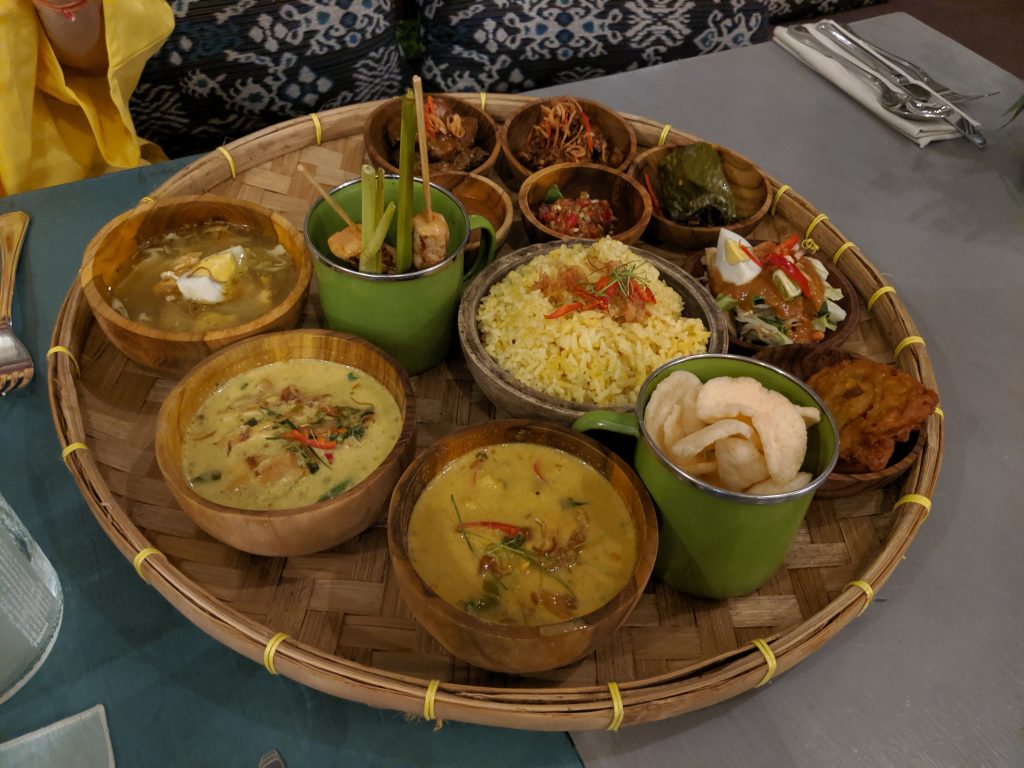
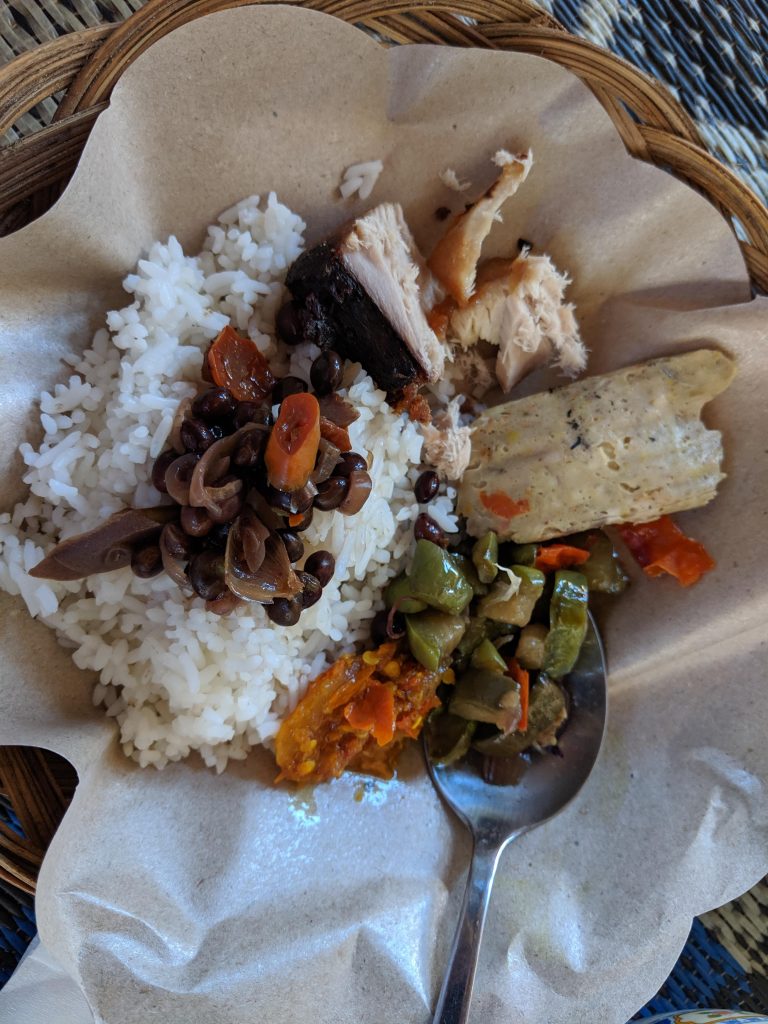
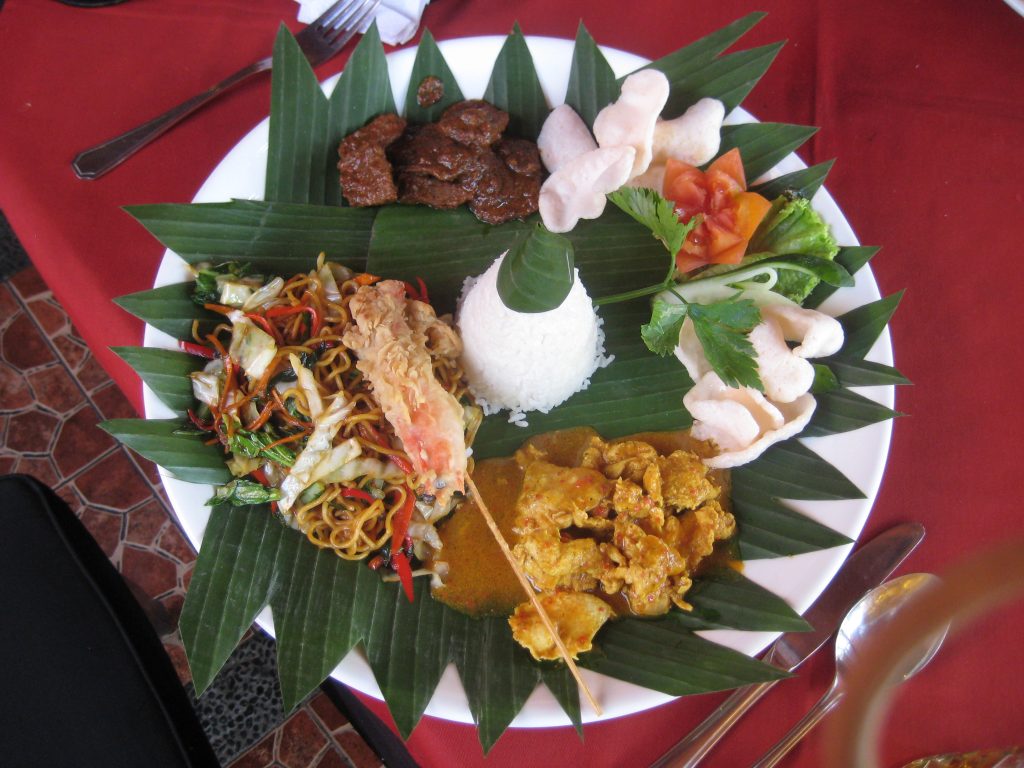
Presentation is an artistic skill and adds to the experience of eating!

Sate is probably the best known dish and can be found virtually everywhere on the island. Meats are marinated with coconut milk and other spices and then skewered on sticks, often bamboo ones. Some sate can be wrapped as well.
Babi Guling and Betutu are work intensive dishes in which pork is roasted whole for eight hours to ensure every morsel is succulent and full flavored.
Nasi goreng is Indonesia’s version of fried rice, presented with a combination of meats and vegetables and accompanied by krupuk (crackers) and acar (mixed pickles).
Where seafood is concerned, grilled tuna is the most consumed fish variety.
The Balinese diet does not have a great many desserts, however dadar gulung – a sweet, rolled coconut pancake – is widely popular and very tasty.
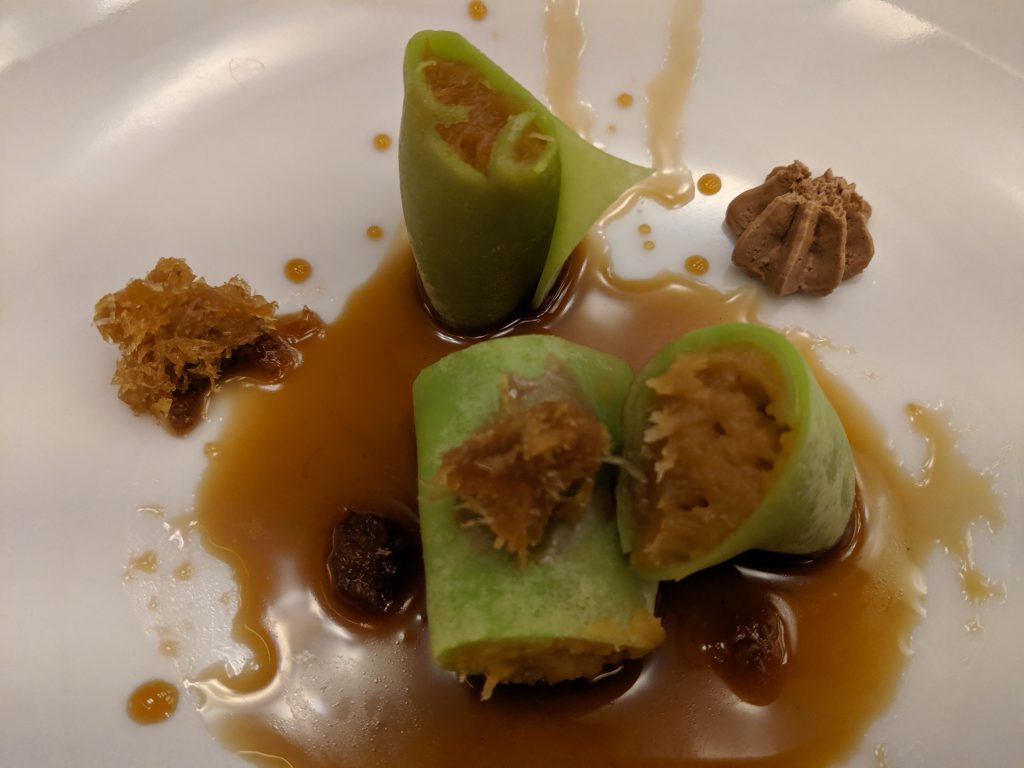
One curious point of discussion in Bali is durian fruit. Dubiously titled ‘king of the fruits’, it is universally despised and detested as one of the most vile smells and tastes on the planet, and not just by outsiders. Even local Balinese have to ‘acquire’ a taste for it.
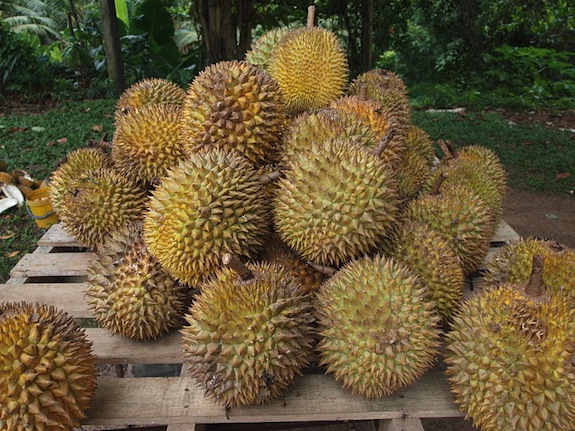
Its odor has been described as a dead corpse in a roadside ditch (quite accurate!) We always keep a wide berth while in Bali, preferring to consume snake fruit, believed to be a superlative memory booster and cure all.
It’s All About the Coffee!
An interesting day trip in Bali is a drive to a plantation to taste various types of the country’s famous coffees and teas.
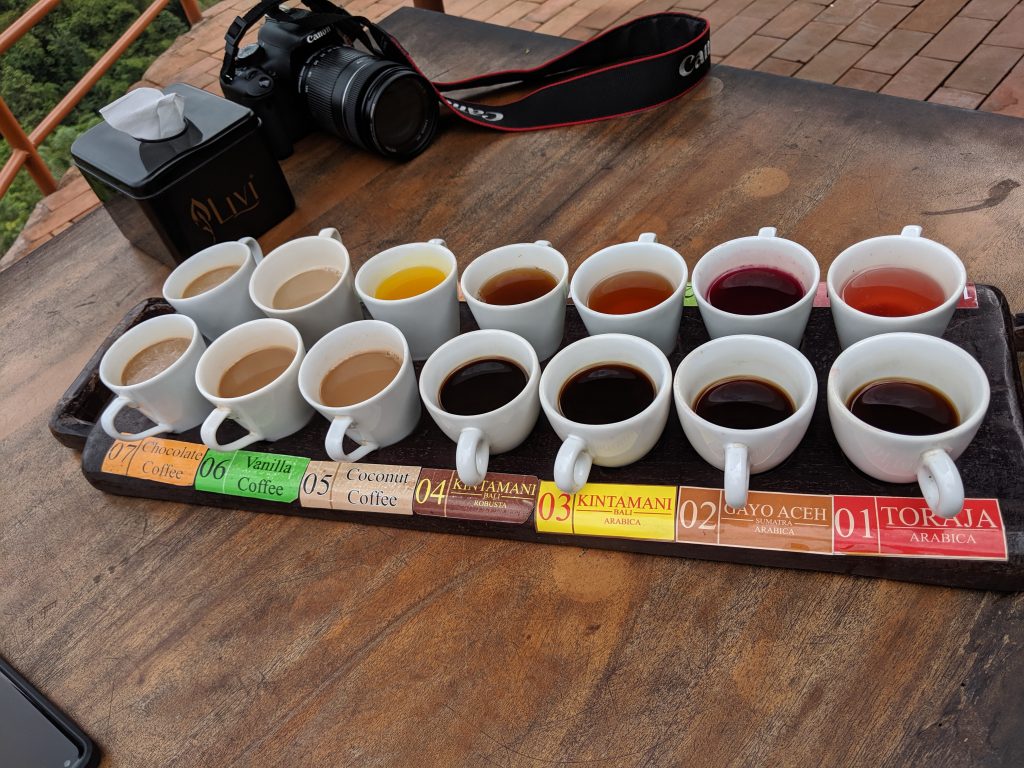
One of the most expensive coffees in the world, Kopi Luwak, traces its history back to the Dutch. While colonizing Bali they enacted a measure forbidding the Balinese to obtain coffee, which they were exporting to their own waiting markets in Europe.
Ever resourceful, the Balinese developed a foolproof plan that would ensure their own steady supply of the beverage, one the Dutch would not want. The system involved collecting coffee beans eaten, digested, and excreted by wild civets. The process of digestion was said to remove much of the caffeine in the beans and further processing ensured the end product was ‘clean for consumption’.
Today Kopi Luwak sells for upwards of US $600 per kilogram. Responsible plantations raise baby civets to continue this process, but release them into the wild when they reach maturity. If you don’t have deep pockets to afford a kilogram, you can purchase a single cup from US $35 to US $80 dollars at specialty coffee shops around Ubud.
Bali is also known for its tasty teas, such as rosella and turmeric, considered to be an excellent immunity booster.
Balinese Religion
Although Indonesia follows Islam, Bali is singularly Hindu in both religion and lifestyle, and differs considerably from that of the Indian subcontinent in its worship and traditional observance.
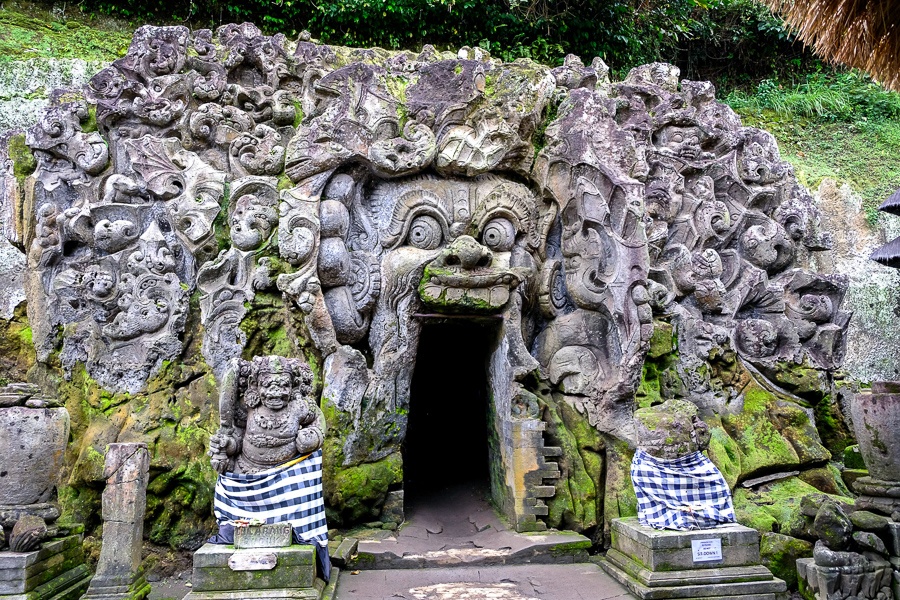
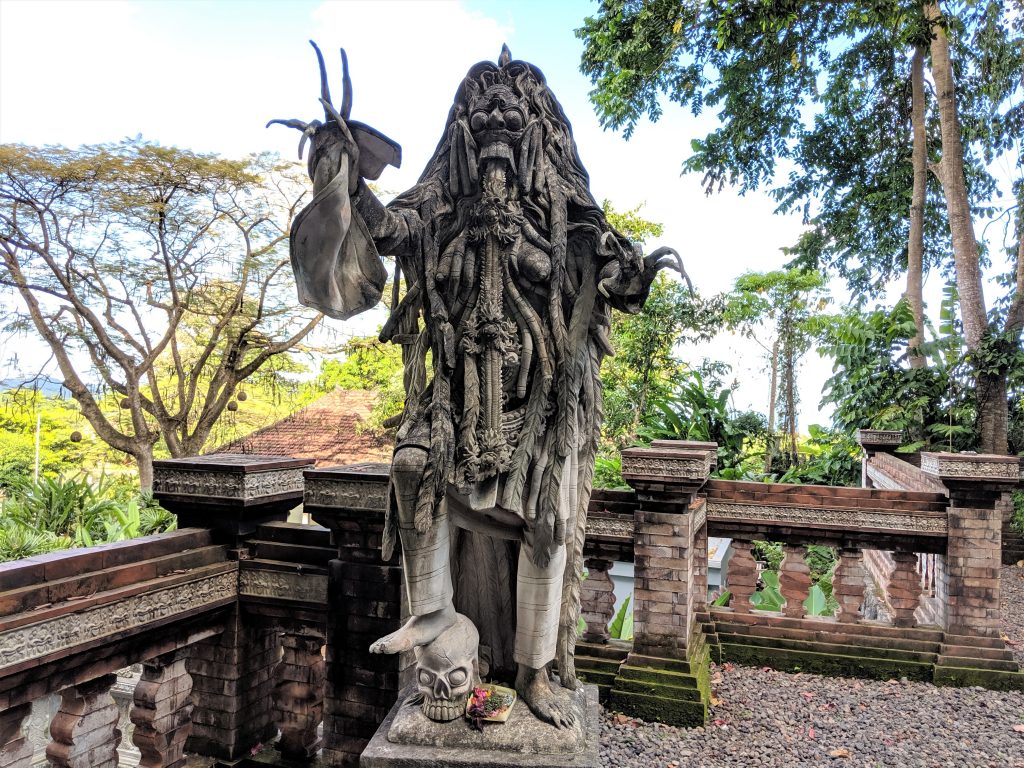
It is an interesting fact to note that unlike many other countries people who go abroad to work almost always return to Bali and do not expatriate on a permanent basis. At the very least they dutifully return to celebrate festivals and spiritual ceremonies. These include everything from birth, puberty, tooth filing to marriage.
Uniquely, most of the important ceremonies are actually after one’s death. Due to expense, lack of space, and other reasons, Balinese temporarily bury their dead until the family can afford cremation rites. These are performed in massive local ceremonies and enable the soul to leave the body for reincarnation.
The Balinese Wedding
Weddings in Bali can cost upwards of US $20,000 and they are highly staged affairs with portraits, paintings, traditional costumes, headpieces, and jewelry. There is also the expense of engaging a priest or pujari to officiate over the ceremony.
The bride is sent to the groom’s home several days in advance and cannot leave until the wedding ceremony is performed. On the day of the wedding the preparation often begins at 4 am in the morning as make-up artists and hairdressers arrive en force to transform her into a classic vision of Balinese beauty.
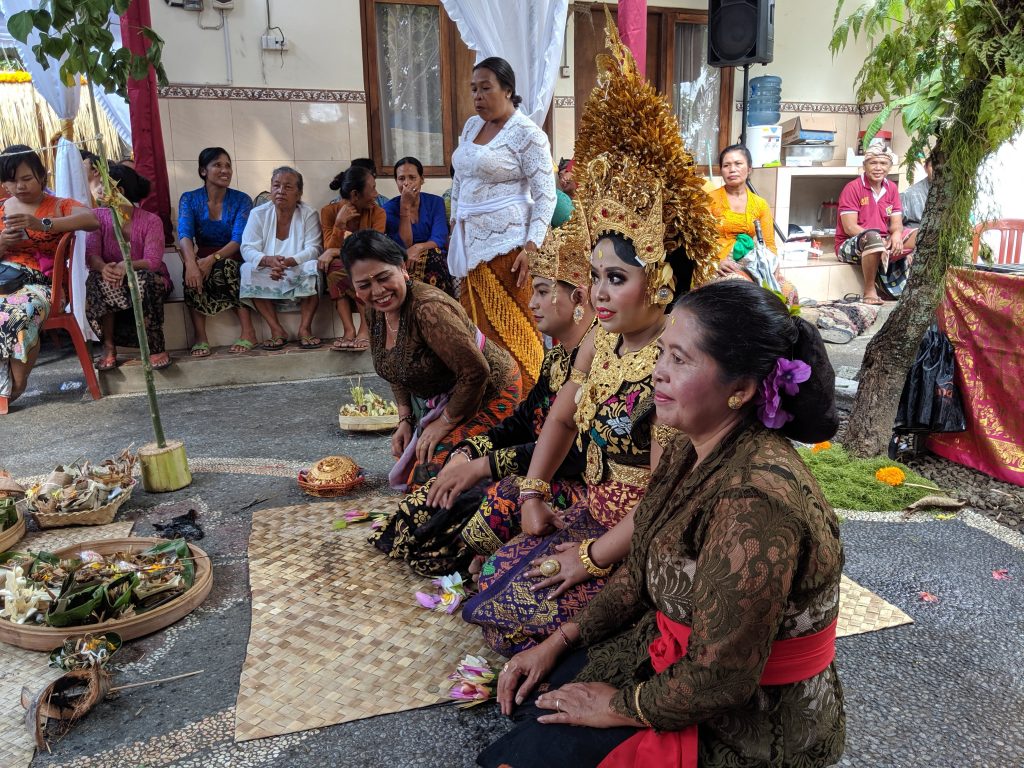
It is not uncommon for women to become pregnant before the wedding; this is a less than subtle insurance that she is able to produce children, and hopefully, a male heir. At the end of the wedding, a bride will stay at the groom’s home for three days, then travel to her own family’s house for a visit.
Children are almost always raised by relatives on both sides and learn their ethical values and customs in the home or at prayer ceremonies. The family unit in Bali is incredibly strong and takes precedence over all else.
“Bali Hindu”
Bali Hindus acknowledge the Indian concept of Trimurti, which consists of Brahma, Vishnu, and Shiva. Water plays a huge role in religious ceremonies and there is a great deal of symbolism in the sprinkling of ‘tirtha’ to help connect the material and spiritual.
There are more shrines and temples than any other structures in Bali.
Most houses have a small shrine at their gate and it is not an understatement to say that there are more shrines and temples than any other structures in Bali.
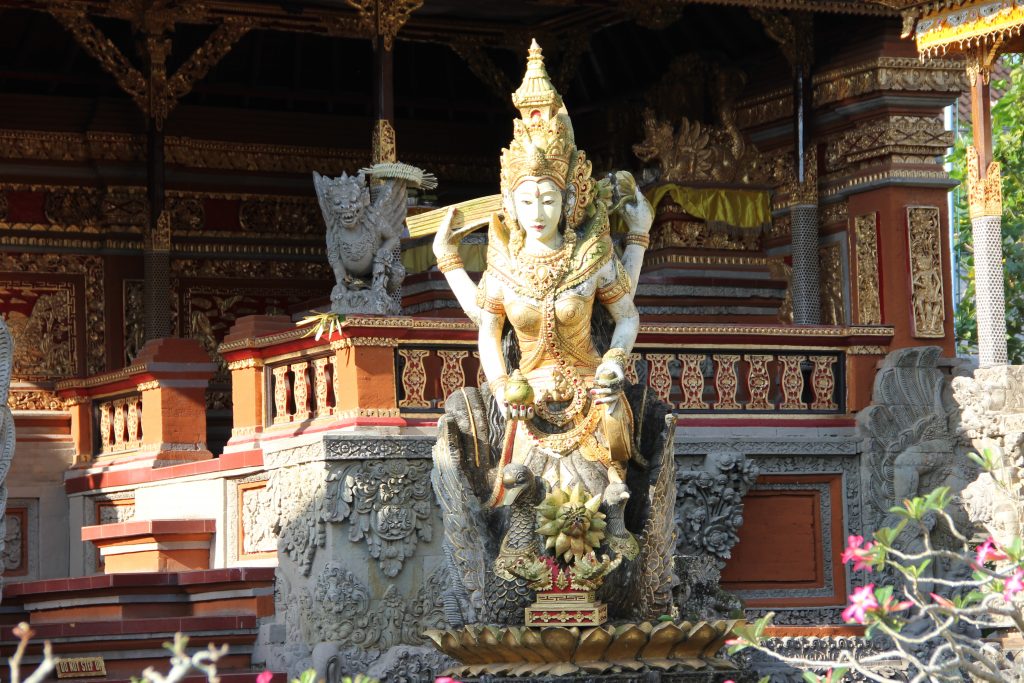
Each day canang sari, or hand fashioned offerings, are freshly made to be placed near the god or before a shop or entrance to the home. Gods on stone pedestals are washed and dressed in sarongs and adorned with flowers. For more elaborate expressions of offerings, there are penjors, incredibly large and ornate hangings made from bamboo, palm leaves, flowers, grasses, and buds.
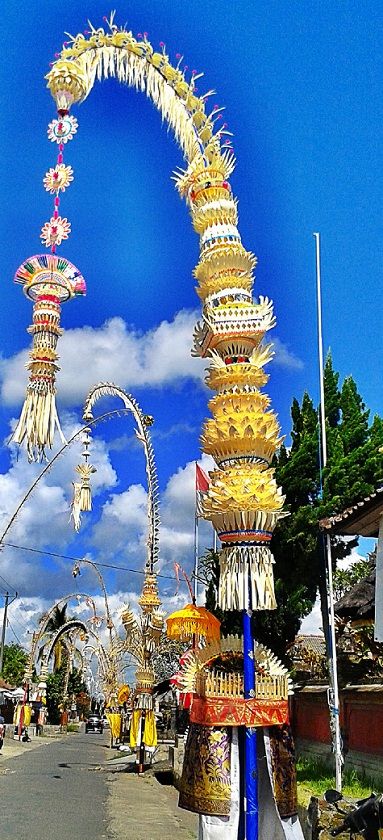
Balinese Festivals
Galungan is perhaps the largest festival on the island, related to India’s Deepawali, and represents the triumph of good over evil. The most unusual holiday remains Nyepi, or Day of Silence, which is celebrated in March.
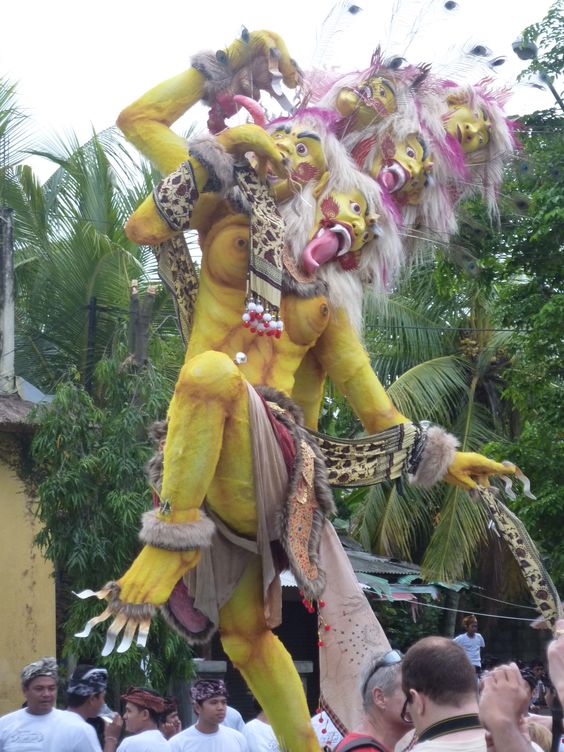
After a procession of Ogoh Ogoh, or giant plaster mythological beings – usually demons – all activity, noise, and sound ceases. It is hoped that the silence will lull the demons into believing the island is uninhabited. Villagers later burn the Ogoh Ogoh in a cemetery as a mark of self-purification.
The most beloved Hindu tale in Bali is undoubtedly the Ramayana, and the story of Sita Ram is played out dramatically in the Kecak dance or illustrated through fine wood carvings and paintings.
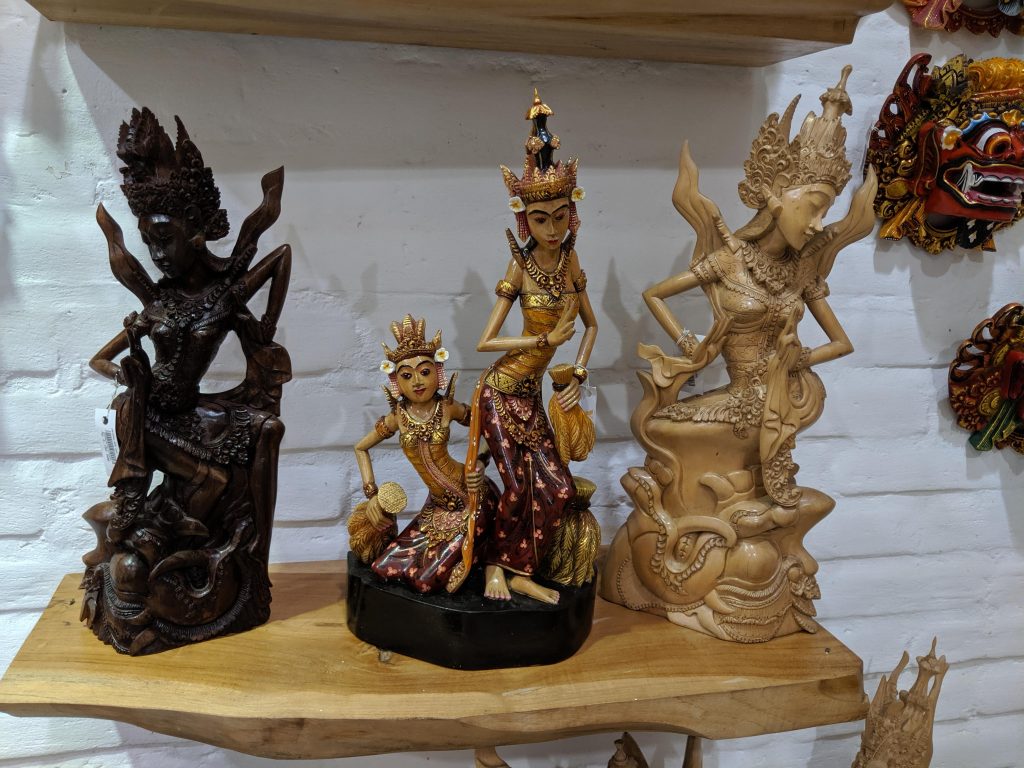
The Mother Temple of Bali
The largest temple in Bali is Besakih and visiting it during ceremonies is a rare treat. Women and men in stark white carry offerings of fruits and flowers on their heads, all in solemn procession with sincere reverence. Penjors quiver in the wind, their intricate decoration and colorful patterns lending a freshness and beauty to the scene.
